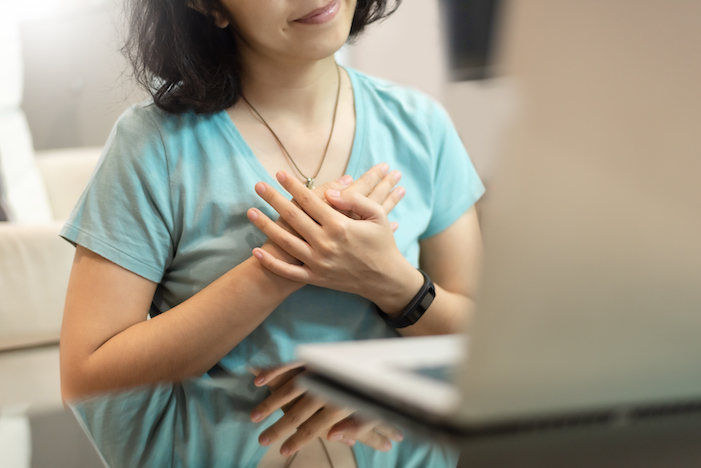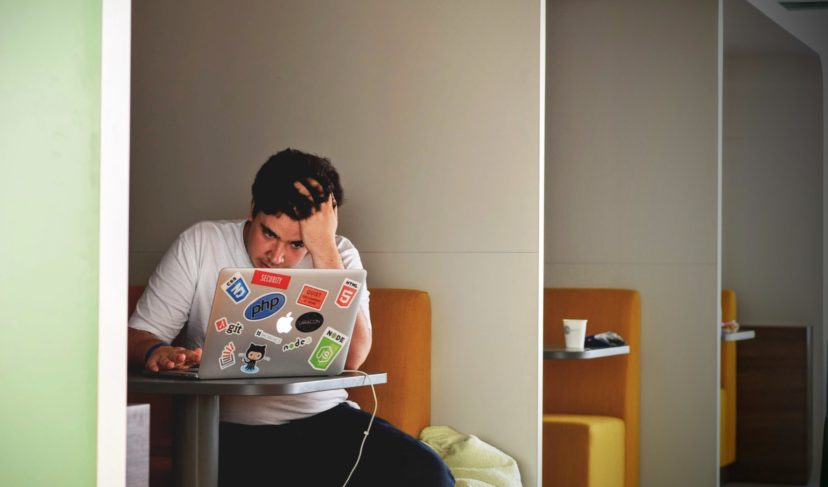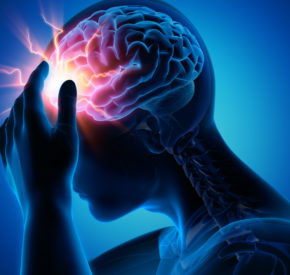Human Rights and Information
Information access is a human right, yet current efforts fall short

Introduction
Information is the ability to gain knowledge about a concept, person or an object to assist in effective decision-making. Today, the Internet gives us the ability to obtain such information on many subjects. In contemporary times, we depend on the ability to gain information in academics or employment, vital information such as the ability to access real-time interactive maps of Covid-19 hotspots, or social media and apps that enhance daily living such as banking and shopping. Because we depend on such information to enhance our knowledge and lives, it is a human right that must be granted to all individuals. At the moment, access to information is a privilege, and for certain groups of people, such as people with disabilities, PWD’s, that access is limited.
First, we must examine where the limitations such as the inability to access the same level of information by the same means for people with disabilities derive from and the ways they have improved recently. The societal perceptions of disability were shaped by the medical model of disability for a long time. The medical model of disability implies that the problem lies within the individual and the solution is to “fix” or “cure” that person. This belief was based on the greater trust on the medical diagnosis. The notion of accessing information to provide the ability for individuals to make independent decisions was not foremost on the minds of the supporters of this model. Because they were “ill” as declared by the medical professionals, PWD’s were believed to need assistance at all times.
Recently, we have seen a shift in perceptions of disability leading to greater opportunities. This is due to the social model of disability that states that the problem is not within the individual, but rather the society’s construction of disability. The social model advocates that the society needs to eliminate environmental barriers and accommodate differences in order to improve the lives of the disabled. This model shifts the focus from the individual to society’s response to their disability. The Americans with Disabilities Act of 1990 was a result of the social model that attempted to eliminate such barriers and discrimination for people with disabilities. At that time, however, the ADA did not have specific guidelines about website accessibility. Since the Internet is the hub of all information today, the accessibility and inclusion for all in the virtual world is also crucial. Despite much growth, I argue that much work still remains in enhancing platforms and providing better access to information such as academics and employment, vital, daily tasks and social media use.
Academics
Due to Covid-19, universities and colleges transitioned very quickly to remote learning. Even those who never participated in an online course were forced to get used to the new norm. For individuals who use assistive technologies, those who hired in-person readers or worked with or relied on disability services technology or staff faced new barriers. In addition, traditional classrooms switched to online platforms. Many of those online platforms have yet to meet current accessibility standards. As a personal example, I attended [a] remote class session where the instructor shared a presentation on the screen with all of the students. Due to my screen-reader software, I was unable to view the presentation as seamlessly as other students. The instructor emailed me the presentation and I was switching tabs back and forth in viewing the presentation and the chat screen where the instruction was taking place.
Outside of Covid-19, many online eBooks are scanned pictures of the book. Screen-readers are unable to read scanned PDF’s, so the individual has to run optical character recognition software on the PDF to make it somewhat readable. Sometimes, the individual has to physically scan the book because a poor scan results in a very poor Optical Character Recognition (OCR). College Disability Services Offices have a much greater liability to work with their students, therefore, they often do much of the scanning and conversion. In the case of employment, many of those poorly scanned PDF’s are now forms that an employee is required to submit to their companies. Even though the disability services offices in colleges are required to work with students, the employment has a much greater responsibility on the individual. The result of an employee’s accommodations is typically based on a supervisor’s or the owner’s discretion.
Recently, the College Board began administering at home Advanced Placement Tests due to Covid-19. Individuals who use assistive technology faced new barriers because the graphs, charts and diagrams were not adequately described. When the students communicated this issue to the College Board, the administration suggested having someone at home describe graphs and charts. This answer is a hindrance to the student’s ability to take the test because not every student has a family member with adequate education and experience to be able to describe such complicated graphs. In addition, the time it takes to verbally describe the graph would take away from the testing time limits. This was putting students who relied on assistive technology at an unfair disadvantage. Several students joined by the National Federation of the Blind stepped up and sued the College Board. This resulted in some improvements; however, full progress is yet to be made. AP tests are the crucial aspect of some transitioning students and can be a factor in admission eligibility. By implementing a system that leaves out a certain group of individuals, we are making the access of such information difficult and unequal.
It is definitely true that there are solutions to these accessibility barriers. Whether it is to use a third-party such as the disability services office converting documents or to simply use teamwork skills in order to exchange information and assistance with colleagues at work. My point is not that these barriers are impossible to overcome. Rather, I argue that these barriers require extra steps and planning for the affected individuals, therefore, the experiences are not as spontaneous and seamless as for those who are not using assistive technology. Even though information is a human right that must be granted to all individuals in academia and employment, the access to such information is limited greatly for individuals who use assistive technology.
Vital Information
Vital information is knowledge that is crucial for people to access to be well-informed. In the case of Covid-19, it is pertinent that individuals are able to understand and analyze the various charts, graphs and numbers. In the beginning, the graphs and charts of the Covid-19 hotspots were unreadable to screen-readers. With the advocacy from groups such as the National Federation of the Blind, American-run databases are now accessible. When an individual with a screen-reader visits cdc.gov, they can read the charts successfully. The world map and graph, however, still remains inaccessible. In order to help leveling out the field, NFB has a Newsline app that individuals can register to access. This app allows individuals to read many newspapers in an accessible format. Now, they included a pandemic data by the Johns Hopkins University that is easily laid out in a screen reader friendly view. This includes the accessibility of world data relating to Covid-19. Local charts and graphs showing trends, however, are still inaccessible to screen-readers. These graphs include those typically shared by the local government. Screen-readers only announce “photo” and no descriptions of graphs are added. While I am very thankful for some accessibility initiatives, I wish to see a change where these services would be accessible from the start.

Social Media
Social media has become a crucial hub for accessing many types of information. There used to be a time when I would scroll through Facebook, Instagram, Twitter and LinkedIn where almost all posts had photos without any description or alt Text. Although I was scrolling through, I could not identify with more than 50% of the posts. Recently, Facebook has added an OCR feature on the photos. Many photos with texts and screenshots are somewhat readable. For example, a screen-reader user while scrolling through Facebook used to hear “Photo” or “image”. Now, it is much more common for screen-readers to read information such as “photo may contain two adults”. It might even read “photo may contain text”. This is a huge difference in Facebook‘s accessibility initiative. Now, many smartphones have the capabilities to add their own captions in their photos before posting. Twitter has also allowed individuals to add descriptions to photos that have been posted. Many people also describe their photos on Instagram, a totally visually focused platform.
Although accessibility is moving in the right direction in terms of social media, I argue that it is not yet complete. Many people have started to do various challenges on Facebook. One of those challenges is to post a picture about something without description. This challenge, in itself, is leaving out a group of individuals who rely on descriptions. Due to full participation in such challenges, individuals don’t write descriptions. When I am scrolling through those social media challenges, I have no idea what people are posting. In addition, Facebook now has the ability for people to create avatars of themselves. When I checked in Mid-May of 2020, this feature was hidden from screen readers. As soon as I turned off Voiceover on an iPhone, this feature would show up. When I was using Facebook with Voiceover, this feature was unusable. Many people including myself have reported this to Facebook so there might be improvements by the time this writing is published. I am thankful for some accessibility improvements; I wish to see a change where all of these platforms would be accessible from the initial phase of development for inclusion for every audience.
Daily Living and Productivity
Information is also a huge aspect of achieving productive daily living tasks. These tasks can include shopping, banking and researching. In order to proceed with many of these online services, one needs to create an account. Creating an account often requires recaptcha verification, a code of characters or images for the user to sort out to verify identity. Unfortunately, many websites still don’t offer audio recaptcha limiting or hindering screen-reader users to complete the activity independently. They often have to use a third-party application such as AIRA or Be My Eyes (applications where the individual can connect with sighted volunteers and agents to receive visual assistance) or another person to complete those challenging recaptcha verifications.
In addition, Covid-19 limited many stores to allow online shopping and pick-up only. Online shopping is great, but some items have very little description, and the picture is not adequately described. This can hinder an independent, productive shopping experience. Amazon is one of the websites where the descriptions of the item are adequate enough for the user to know what they are shopping and perusing. While it is definitely true that there are simple solutions to overcoming these barriers, the initial experience is not as spontaneous and seamless as it would have been for someone using no assistive technology.

Discussion
Information is a human right that is crucial in learning and gaining knowledge to be productive and well-equipped for effective decision-making. Aspects such as academics, employment, vital information, social media and daily living tasks are part of such information. This information must be granted to and accessed by all individuals regardless of race, ethnicity, disability, gender or religion. I argue that the level of access of such information is limited for users of assistive technology. For example, Many educational and testing online platforms need to revive their accessibility. In addition, many important PDF’s documents for academics and employment are not accessible from the beginning. As far as vital information is concerned, much information needed to be well-informed about Covid-19 is still somewhat inaccessible. Social media is gaining some accessibility improvements, but much progress is yet to be made in improving visual content such as photo descriptions and avatars. Lastly, many websites and applications that enhance daily living tasks require recaptcha verification that is usually inaccessible to screen-readers due to the unavailability of audio recaptcha.
After examining information is indeed a human right and the fact that it is limited for some groups, we must ponder about the actions and steps we can take to improve access. As a company who believes in accessibility design from the start as its core mission, we must incorporate feedback from daily, real-time users into our web design. In order to hear feedback from assistive technology users, it is crucial for us at Tamman to remain connected to the disability community to find users of various backgrounds in technology to get effective feedback that we can implement in our web design. In addition, we must advocate for the same accessibility initiatives to other companies and developers to achieve wide-level results. This is not a one-day or even one-year process. This will take time and if we remain determined and connected, I believe that we can make a difference in achieving better access to information for all individuals.
___
Nimit Kaur has dedicated her career to advancing inclusion and equity for people with disabilities through direct services and policy change. Starting as an intern, she has become a Tamman tester, partner, and contributor. She brings her lived experience and perspective to the Tamman Team.





